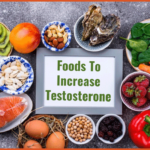A low FODMAP diet is often recommended for people with irritable bowel syndrome (IBS) to help manage symptoms like bloating, gas, and abdominal pain. While it may require some adjustments, it is still possible to eat a healthy and well-balanced diet on a low FODMAP plan. Here are some tips to help you eat healthy on a FODMAP diet:
- Educate yourself: Learn about foods that are high in FODMAPs and those that are low in FODMAPs. This will help you make informed choices when planning meals and grocery shopping.
- Focus on low FODMAP foods: Include a variety of low FODMAP fruits and vegetables in your diet, such as berries, oranges, spinach, carrots, and bell peppers. Opt for gluten-free grains like quinoa, rice, oats, and corn.
- Include lean proteins: Incorporate lean protein sources into your meals, such as poultry, fish, eggs, tofu, and tempeh. These options are generally low in FODMAPs and provide essential nutrients.
- Experiment with dairy alternatives: Many dairy products are high in FODMAPs, so consider trying lactose-free or dairy-free alternatives like almond milk, coconut milk, or lactose-free dairy products.
- Choose low FODMAP legumes: Some legumes can still be included on a low FODMAP diet, such as canned lentils, chickpeas, and firm tofu. However, portions should be limited to ensure FODMAP intake remains low.
- Be cautious with condiments and sauces: Many sauces and condiments contain high amounts of FODMAPs. Read labels carefully and opt for low FODMAP alternatives or make your own using low FODMAP ingredients.
- Pay attention to portion sizes: Although a food may be low in FODMAPs, consuming large amounts can still trigger symptoms. Be mindful of portion sizes and listen to your body’s reactions.
- Work with a registered dietitian: Consulting with a registered dietitian who specializes in the low FODMAP diet can provide personalized guidance and support. They can help ensure that you are meeting your nutritional needs while managing your symptoms effectively.
Remember, the FODMAP diet is meant to be followed for a limited amount of time under the guidance of a healthcare professional or registered dietitian. It is important to reintroduce FODMAP-containing foods gradually to identify trigger foods and establish a more varied and balanced diet.











